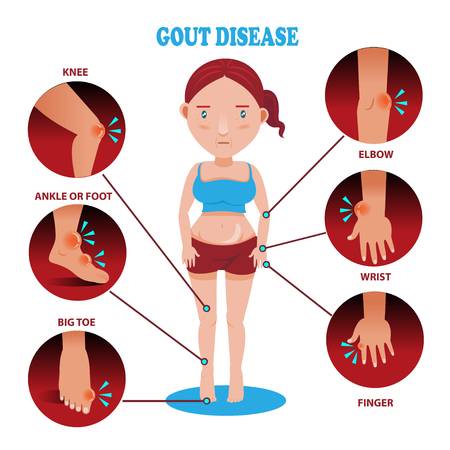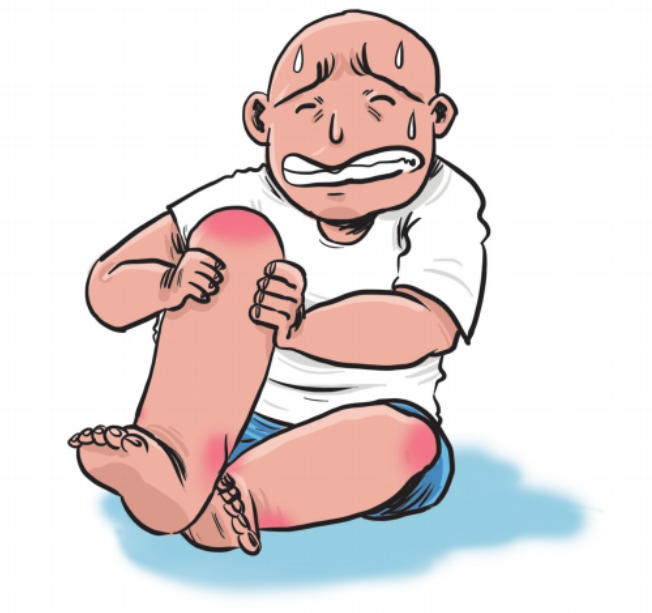Have you ever just woken up one day and suddenly one of your joints, whether on your toes, ankle, or knee, is suddenly, unexplainably warm, red, and swollen that you can hardly move it without feeling pain?
If that has ever happened to you, don’t worry, know that you are not alone. That’s probably gout, or gouty arthritis, and is very common in Filipinos all over the world. So common, in fact, that according to an earlier research of the Philippine Rheumatology Association, gout affects more than 1.6 million Filipinos.

ALSO READ: 6 Things to Get You Started if You Want to Pursue a Healthy Lifestyle
But let’s backtrack for a second. What is gout anyway?
What is gout and what causes it?
According to the Philippine Council for Health Research and Development (PCHRD), gout or gouty arthritis is “a joint disorder characterized by acute inflammation.” It most commonly affects the joint on the big toe, but can also affect other joints in the body like the ankles, wrists, and knees. It is so common in Filipinos that we have one of the highest cases of gout in the world. Studies can’t tell yet exactly why, but factors are that it can be just the Pinoy genes, coupled with our diet.
But what exactly triggers it? Gout attacks are caused by high levels of uric acid in the body. There are many factors as to why uric acid rises in one’s system, but a predominant reason is the food and drinks we consume. Uric acid is dissolved in our blood, passes through the kidney, and is eliminated by our body though urine. In some cases, though, the body produces too much uric acid that the kidney can’t eliminate all of it. This build up of uric acid in the blood causes uric acid crystals to form in the body’s joints and tissues, that we know as gout.
How do you know if it’s gout? A gouty arthritis will be a swollen joint that is red, hot, and tender to the touch.
It can also be painful.
Who can get affected with gout?
Although gout mostly happens to men between ages 40 to 45, anyone, male or female, can be afflicted with gout as early as around 18 years old.

What can you do if you get a gout attack?
If you do experience gout, the number one thing to remember is, don’t be afraid! It’s very common and can easily be treated, even at home. Here are a few things you can do:
- Apply an ice pack to your swollen joint. Remember, cold compress, not hot. A hot compress can only make the swelling worse.
- Hydrate! Drinking lots of water can help rinse your kidney and flush out that unwanted uric acid build-up.
- Avoid food and drinks high in uric acid like red meat, organ meats like liver, seafood and shellfish, and, unfortunately, alcoholic beverages.
- Rest. Take a break, you know?
- Go see a doctor. If your condition doesn’t get better or you’re really bothered by it, you can see a doctor for proper treatment and medication. A simple anti-inflammatory medicine prescribed by your doctor can usually do the trick.

How can you prevent gout?
Yes, Filipinos are prone to gout, but that doesn’t mean you can’t prevent it. Whether you’ve never had it, or only have an acute case, here are some things you can do to make sure your joints are happy and healthy:
- Proper diet. Being overweight and obesity increases your risk to gout. Watch your weight.
- Limit your intake of alcohol. All kinds of alcohol. If you can, avoid it completely as it is associated with increased gout risk and recurrent attacks.
- Avoid fatty foods. Eat healthy!
- Limit consumption of foods high in uric acid. You can find more info on that here.
- Drink plenty of water.
- Generally, just eat well and live healthy.
The bottomline is, despite the fact that gout affects millions of Filipinos, gouty arthritis is maintainable and, according to PCHRD, the easiest form of arthritis to control. Just maintain a good diet, eat well, and take your medications when needed.
Sources: Philippine Council for Health Research and Development (PCHRD), Philippine Rheumatology Association, and Arthritis.org.
Do you have any experience with gouty arthritis or know someone who does? Tell us about it in the comments!




